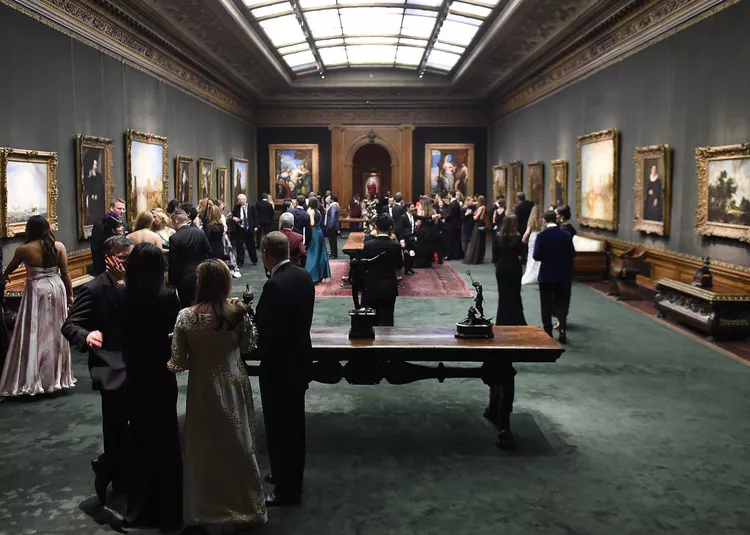When industrialist Henry Clay Frick moved to New York in 1905, he focused on his art collection and the mansion that would later become a public museum. A prime player in the “race for the great masters,” Frick amassed an extraordinary collection of decorative arts and paintings, including works by Bellini, Titian, Holbein, Goya, Velazquez, Turner, Whistler, and Fragonard.
2. Key Paintings to Discover
In 1935, when the museum opened, the public was stunned to see the great treasures on display. Frick’s nefarious reputation was repaired, and today the Frick Collection is regarded as one of the world’s greatest art museums.
“St. Francis in Ecstasy”, Giovanni Bellini

This oil painting on board is a masterpiece of the Venetian Renaissance. Full of details that unfold the story, the main scene shows Saint Francis of Assisi receiving the stigmata, the wounds of Christ.
The blue-green light cast on the Umbrian landscape may reflect the strange light of a solar eclipse that occurred around the time the painting was made. Look for the tiny piece of paper blown against a scrub tree that bears the artist’s signature.
“Portrait of Comtesse d’Haussonville”, Jean Auguste Dominique Ingres

The Comtesse was a liberated woman for her day who published books and essays. Though she was married at 18, she was known for her independence.
In this 1845 painting, she pulls you so deeply toward her eyes you might not notice the unmade bed in the background. Her composure and silk gown may speak to her aristocratic status, but the sensuality of the back of her neck reflected in the mirror may reveal the artist’s true gaze.
“Nicolaes Ruts”, Rembrandt

The Frick Collection showcases four paintings by Rembrandt, including the famous “The Polish Rider.” This 1631 painting of Nicolaes Ruts, a merchant who traded furs in Russia, makes the strongest impression. The hand which holds a letter seems to push straight through the dark surface of the canvas. If Dutch art has failed to interest you in the past, this painting may change your view forever.
“Sir Thomas More”, Hans Holbein

One of the distinctive features of the Frick Collection is the intentional arrangement of paintings by Frick himself. This portrait of Sir Thomas More by Hans Holbein, created in 1527, is directly across the fireplace from his adversary Thomas Cromwell.
The luminous surface and lifelike expression reflect More’s integrity. The gold S’s on his chain symbolize his service to the king and reference the motto Souvent me souvenir, or “Think of me often.” This painting was among Frick’s most favorite pieces in the collection.
“Officer and a Laughing Girl”, Vermeer

With only 16 known paintings by Johannes Vermeer, the Frick Collection features two. The ethereal light for which Vermeer is renowned illuminates the face of a young woman engaged in conversation with an officer.
A map of the Netherlands hangs on the wall above her, and scholars continue to debate the meaning of this work and whether Vermeer employed a camera obscura to create the illusion of depth.





